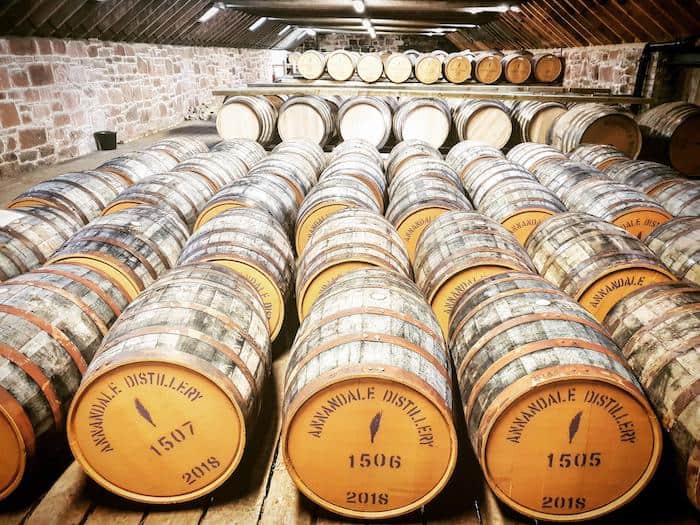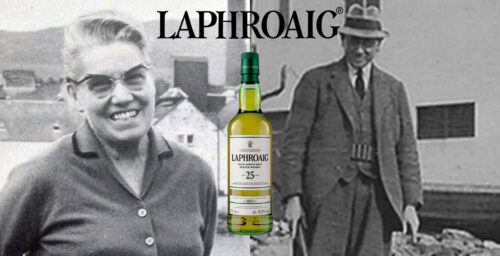The Lowlands style is often characterised as light and fruity, but with new whisky and plenty of evidence that supports a peaty history, it’s time to rewrite the story.
As a relative newcomer (and latecomer) to the whisky business, I exist in a state of permanent learning. Absorbing the nuances of whisky production, the grains, the stills, the history, the styles and the regions is an ongoing process and I sometimes wonder if I’ll ever take it all in.
After several years in professional services, I now work for a new distillery in the South of Scotland. It’s called Annandale Distillery, and it sits almost at the border with England, just a short hop from the main motorway between Glasgow and Carlisle. Restored after nearly 100 years of silence, we’re now producing peated and unpeated single malt – and it’s deliberately not in the ‘Lowlands style.’
So, what exactly is the Lowlands style?
Like many a budding enthusiast before me, I started my research on the Internet. Google ‘lowlands whisky’ and whisky blogs and retail websites will give you an overview of the region and the sort of whisky you might expect.

Where Lowlands is concerned, the description is typically:
‘gentle, grassy, easy-drinking, light and fruity, floral, refreshing, citrus.’
The Whisky Exchange describe it thus, Flaviar agrees, Berry Bros. & Rudd support the story, even here at the Whiskey Wash, it’s the same story. And there’s much mention of triple distillation, column – or Coffey – stills and grain whisky for blending.
These tasting notes for Glenkinchie 12 year old (borrowed from their website, thank you) capture it in a nutshell: ‘The nose is fresh and floral, with spices and citrus fruits, plus a hint of marshmallow. Notably elegant. Water releases cut grass and lemon notes. Medium-bodied, smooth, sweet and fruity with malt, butter and cheesecake.’
Having exhausted the Internet (well, the first two pages of each Google search), I turned to the pages of Whisky Distilleries of the United Kingdom by Alfred Barnard, an invaluable historic record detailing the plant and architecture of every active whisky distillery in the country, as well as some charming details of his travel adventures. I was particularly interested to see what he made of the Lowlands region in 1887. To my surprise, the book revealed that nearly all the active Lowlands distilleries of the time were using peat to fire their kilns, including Bladnoch;
‘…At the right and left angles of the court, there are Kilns, both loaded by hoists, floored with perforated iron plates and heated with peats… The peat shed is a quite handsome erection, being supported on iron columns with a slated roof…’
And Annandale;
‘’he malt is raised by elevators to the Kiln at the end of the Maltings, which is floored with wire cloth and heated with peat..’ – but we knew that already – we’re in the middle of a peat bog.
St Magdalene used ‘peat and coke in stated proportions,’ at Provanmill peat ‘is the only fuel used for drying purposes,’ and Dundashill was positively overflowing with the stuff.
Of the 23 Lowlands distilleries he visits in 1887, only seven were operating a Coffey still (often alongside their pot stills), and there’s scant mention of triple distillation.
So, it seems this widespread interpretation of the Lowlands style doesn’t hark back to the golden days at all. It’s actually a newer phenomenon.
Glenkinchie, with its light and grassy style, sprang into life at the turn of the century (and was lucky enough to push through both wars). Auchentoshan didn’t survive the war years, but was restored to life in the 1960s, when presumably it began its now infamous triple distillation process. Around that same time, Girvan unveiled its highly advanced, column still-driven grain distillery. And in an era of more widespread journalism, a light and delicate style was encapsulated and perpetuated to the current day.
It’s now 2019. The same three distilleries are still in business, which is fantastic. But many more have sprung up alongside. Ailsa Bay, Annandale, Borders, Daftmill, Eden Mill, Glasgow, Lindores Abbey, Inchdairnie and Clydeside are all open for business, and a reinvigorated Bladnoch opens its new visitor centre later this year.
John Fordyce from Borders Distillery has long felt the Lowlands classification is distorting. “With such a variety of Distilleries, styles and process the only thing they can all claim to have in common is adherence to the definition of Scotch,’he says.‘In a time of increasing consumer demand for provenance and detail we are missing a trick with these generic descriptions.”
Annandale co-owner David Thomson agrees that provenance is key. “The true character of Lowland Scotch whisky will be finally restored when peat sourced from the Dumfries & Galloway and the Borders regions of Scotland is used for malting. The composition of burning peat smoke depends on the nature of the decaying flora and the micro-environment within the peat bog.
“This gives Islay peat a different character from Highland peat and the resulting whiskies a different flavour profile. Historically, Lowland whiskies were produced using peated malt, dried post-malting using locally sourced peat’, he explains, adding;‘This is very firmly on the agenda!”
So I’m making a case for the outright re-writing of the Lowlands story. The accepted version of events – a bit of a sweeping generalization – is at best limiting, and at worst damaging. How many drinkers have been put off sampling the varied whiskies of the Lowlands region because they believe them all to be light, floral and feminine?
There’s a whole new story to be told, and it is this new wave of distilleries that are helping to tell it.









